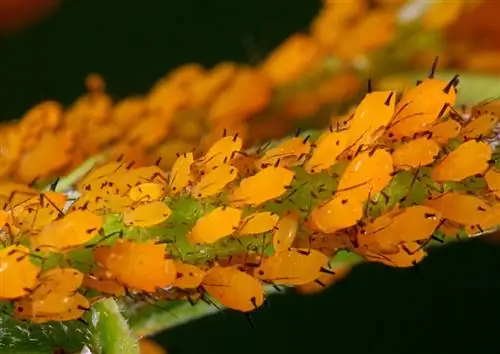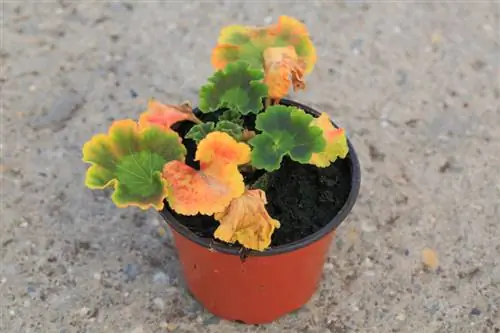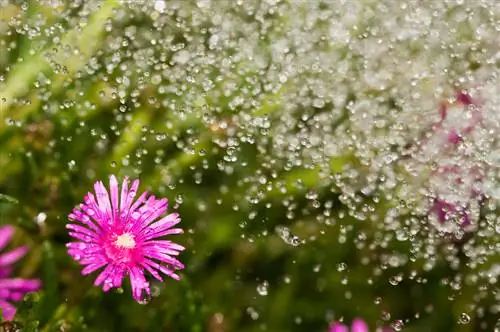- Author admin [email protected].
- Public 2023-12-16 16:46.
- Last modified 2025-06-01 06:02.
The laburnum is a beautiful and fragrant ornamental shrub for gardens and parks - and one that is particularly easy to care for. It is also robust against diseases and pest infestations. Nevertheless, one or two aches and pains can occur.

What diseases can occur with laburnum?
Possible laburnum diseases include galena (fungal disease) and pests such as spider mites and aphids. To prevent galena, affected shoots should be removed and interfaces sealed. In the case of pests, it is recommended to use beneficial insects such as predatory mites or ladybird larvae.
Gold shower - beautiful and robust
From a horticultural point of view, laburnum, Latin laburnum, is an extremely grateful ornamental shrub. It places hardly any demands on its location and yet produces beautiful and intensely fragrant flowers every year. What's also great is that it is very less susceptible to diseases and pests. And if he does become ill or infected with parasites, it usually doesn't bother him very much. He gets over many aches and pains on his own and does not need any special treatment.
Possible diseases and pests that should be treated are:
- Palelustre
- Spider mites
- Aphids
Palelustre
Galena is a fungal disease that causes the leaves to turn gray. As with most diseases that can affect laburnum, the cause of galena is usually soil that is too wet and cold. In any case, avoid excessive watering. As a rule, the golden rain does not require any additional watering.
Measures
You can control the galena by removing infected shoots with a clean knife that should be cleaned again and again between cuts. It is best to seal the interfaces.
Spider mites
The small red, yellowish or greenish spider mites can be seen with the naked eye - and above all, they cover their plant host with their silvery webs of thread. They suck on the plant, usually on the underside of the leaves, and can definitely weaken it.
Aphids
Aphids can also be seen with the naked eye and are characterized by their black to green or yellowish-orange color and a mealy coating. Aphids also suck the sap of their plant host.
Measures against pests
For both spider mites and aphids, you can search the laburnum thoroughly and remove the affected shoots as completely as possible. Cut sealing is also recommended here.
Instead of mechanical removal and to avoid pruning, which the laburnum does not tolerate well, you can of course also use an insecticide. Ecologically more advantageous and more environmentally friendly is the targeted use of beneficial insects such as predatory mites or gall midges, which you can purchase from specialist retailers. Lacewings or ladybird larvae are also suitable for aphids.






